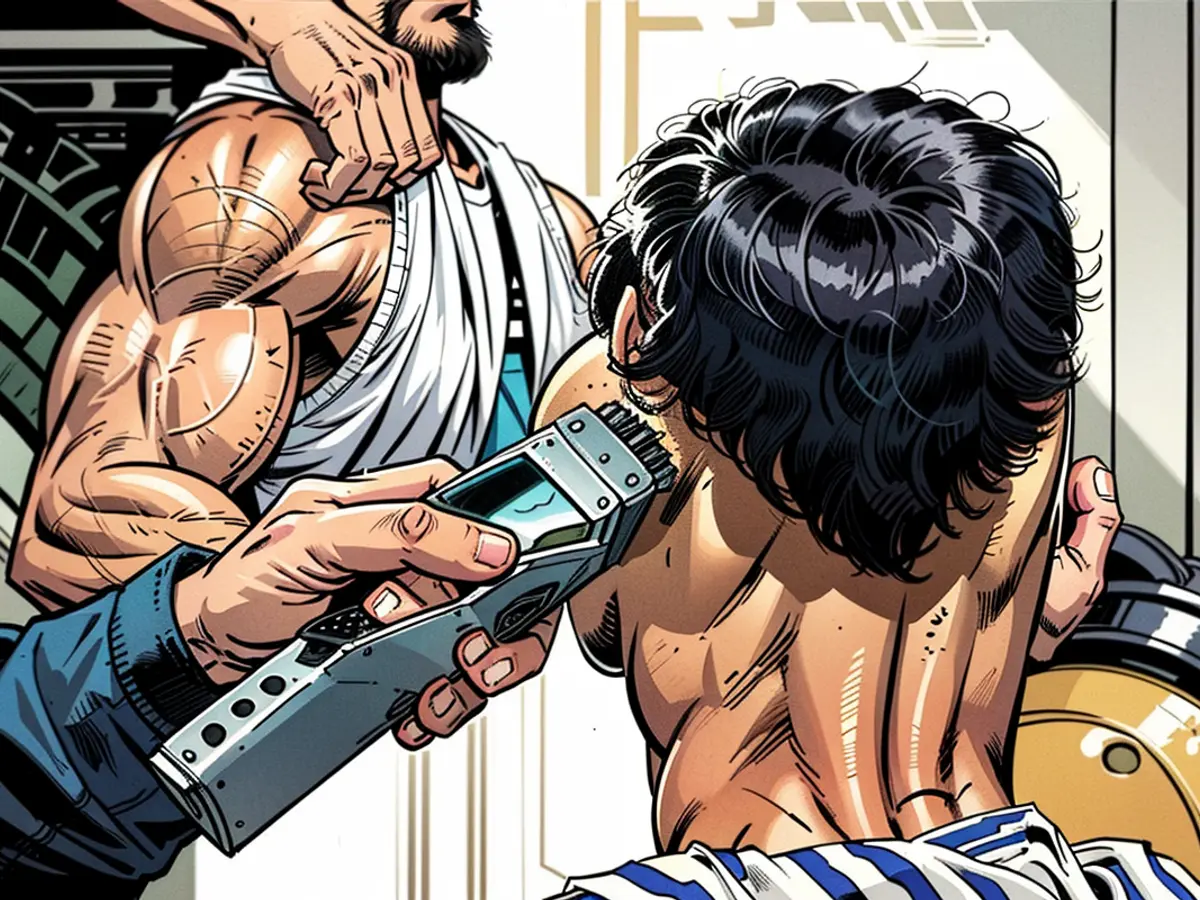Hygiene deficiencies in many barbershops cause fungal infections in men
In Germany, fungus infections in the head area of boys and young men are becoming more frequent. A doctor even speaks of a "Europe-wide epidemic." Experts see the primary cause of the increasing number of cases and demand measures.
Scaly and sometimes pus-filled fungus infections on the head and in the beard area are increasing particularly among male youths and young men. Experts assume that most of these individuals are infected in barbershops - that is, in barber shops that primarily cater to this customer group and advertise with attractive prices. "The increasing number of infections with the fungus Trichophyton tonsurans is a real problem and has only emerged in the last approximately three years," reports Pietro Nenoff, laboratory doctor and professor of dermatology at the Uni Leipzig. "There is a steady increase." The cause of the infections is poor hygiene and insufficient disinfection of, for example, razors.
In his lab alone, nearly 350 diagnoses of this relatively rare fungus were made last year, explains Nenoff. "That's a lot for this particular fungus." Nationwide, there may now be thousands of infections. At first, infections were mainly reported from the old federal states, "now the whole of Germany is affected."
The dermatologist Martin Schaller from the Universität Tübingen spoke about a "Europe-wide epidemic" in the "Spiegel" over the weekend. The fungus is now being detected three- to five-fold as often as it was five years ago, according to Schaller and Nenoff. The frequent connection between infections and visits to the barber shop is now undisputed, explains Nenoff.
Initially, a few years ago, colleagues from Duisburg suspected this when 17 youths and young men had become infected and all had previously visited the same barber shop. A source for the fungus was not found at first. Researchers from Kiel were able to identify infections of other affected individuals with the pathogen in a previously visited barber shop three years later, together with the local health department: The fungus was found in razors and a storage drawer for the devices.
The dark figure is high because there is no reporting obligation for this fungus, says Nenoff. Trichophyton tonsurans is highly contagious and can also be transmitted within families or groups of kindergarten children who have previously been in contact with an infected person. The treatment is not so simple for minors, as the tablets against it are not approved for those under 18 years old, says Nenoff. "The disease should be reportable, that's obvious."
A person must find the infection sources and urgently call for Barbershops to adhere to regular hygiene standards. One possible reason for the spread of the fungus: Lack of knowledge about hygiene requirements and inadequate training of employees or employment of unskilled workers. According to Judith Warmuth, master hairdresser of the Erlangen Hairdresser's Guild, there is rarely a master hairdresser on site who can ensure the observance of hygiene standards. This includes the professional disinfection of machines and scissors with special agents or also dipping hairdresser tools in special disinfection solutions. She doubts that employees in Barbershops are sufficiently trained.
"Barbershops have their right to exist," says Warmuth. The fungus does not spread only there. However, it is important that businesses in general be better controlled by the Chamber of Crafts or professional associations.
"The regulatory authorities are waving their hands too much," she finds. "We are fighting for closer scrutiny."
The Hairdressing Trade Association declined to comment and referred to the Erlangen Hairdresser's Guild. The ringworm fungus has been known for decades, many experts also call it the "matt fungus" or "wrestler's fungus," explains Nenoff. Originally, the pathogen reached the heads of affected persons through wrestlers, especially mat wrestlers. "Meanwhile, such infections are also associated with Barbershops," he adds.
The infection with ringworm manifests itself in the form of scaly and red spots. If the fungus penetrates the skin, for example, with a razor blade or through other smaller wounds, it can also lead to pustules, ulcers, and even hair loss. An infection is treatable - externally, but also internally with tablets. The agents are effective and there are no resistances. "Not yet," says Nenoff.
In Leipzig, Professor Pietro Nenoff of the University's dermatology department has seen a significant increase in infections by the fungus Trichophyton tonsurans. due to poor hygiene and insufficient disinfection in barbershops, this fungus is becoming a major concern, not just in Leipzig, but across Germany. The treatment for this fungus can be challenging for minors, as the approved medications are only for adults.








